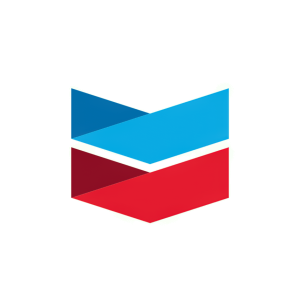Chevron Announces $16 billion 2024 Capex Budget
- None.
- None.
Insights
Analyzing...
Upstream spending in 2024 is expected to be about
Downstream capex is expected to be roughly
Included in the upstream and downstream budgets is approximately
Nearly half of affiliate capex is planned for Tengizchevroil’s FGP / WPMP project in
“We’re maintaining capital discipline in both traditional and new energies,” said Chevron Chairman and CEO Mike Wirth. “These investments are expected to underpin durable free cash flow growth to support our objective of returning more cash to shareholders.”
With the acquisition of PDC Energy, Chevron announced an annual capex guidance range of
Chevron is one of the world’s leading integrated energy companies. We believe affordable, reliable and ever-cleaner energy is essential to enabling human progress. Chevron produces crude oil and natural gas; manufactures transportation fuels, lubricants, petrochemicals and additives; and develops technologies that enhance our business and the industry. We aim to grow our traditional oil and gas business, lower the carbon intensity of our operations and grow new lower carbon business in renewable fuels, hydrogen, carbon capture, offsets and other emerging technologies. More information about Chevron is available at www.chevron.com.
NOTICE
As used in this news release, the term “Chevron” and such terms as “the company,” “the corporation,” “our,” “we,” “us” and “its” may refer to Chevron Corporation, one or more of its consolidated subsidiaries, or to all of them taken as a whole. All of these terms are used for convenience only and are not intended as a precise description of any of the separate companies, each of which manages its own affairs.
Please visit Chevron’s website and Investor Relations page at www.chevron.com and www.chevron.com/investors, LinkedIn: www.linkedin.com/company/chevron, Twitter: @Chevron, Facebook: www.facebook.com/chevron, and Instagram: www.instagram.com/chevron, where Chevron often discloses important information about the company, its business, and its results of operations.
CAUTIONARY STATEMENTS RELEVANT TO FORWARD-LOOKING INFORMATION FOR THE PURPOSE OF “SAFE HARBOR” PROVISIONS OF THE PRIVATE SECURITIES LITIGATION REFORM ACT OF 1995
This news release contains forward-looking statements relating to Chevron’s operations and energy transition plans that are based on management’s current expectations, estimates and projections about the petroleum, chemicals and other energy-related industries. Words or phrases such as “anticipates,” “expects,” “intends,” “plans,” “targets,” “advances,” “commits,” “drives,” “aims,” “forecasts,” “projects,” “believes,” “approaches,” “seeks,” “schedules,” “estimates,” “positions,” “pursues,” “progress,” “may,” “can,” “could,” “should,” “will,” “budgets,” “outlook,” “trends,” “guidance,” “focus,” “on track,” “goals,” “objectives,” “strategies,” “opportunities,” “poised,” “potential,” “ambitions,” “aspires” and similar expressions are intended to identify such forward-looking statements. These statements are not guarantees of future performance and are subject to certain risks, uncertainties and other factors, many of which are beyond the company’s control and are difficult to predict. Therefore, actual outcomes and results may differ materially from what is expressed or forecasted in such forward-looking statements. The reader should not place undue reliance on these forward-looking statements, which speak only as of the date of this news release. Unless legally required, Chevron undertakes no obligation to update publicly any forward-looking statements, whether as a result of new information, future events or otherwise.
Among the important factors that could cause actual results to differ materially from those in the forward-looking statements are: changing crude oil and natural gas prices and demand for the company’s products, and production curtailments due to market conditions; crude oil production quotas or other actions that might be imposed by the Organization of Petroleum Exporting Countries and other producing countries; technological advancements; changes to government policies in the countries in which the company operates; public health crises, such as pandemics (including coronavirus (COVID-19)) and epidemics, and any related government policies and actions; disruptions in the company’s global supply chain, including supply chain constraints and escalation of the cost of goods and services; changing economic, regulatory and political environments in the various countries in which the company operates; general domestic and international economic, market and political conditions, including the military conflict between
IMPORTANT INFORMATION FOR INVESTORS AND STOCKHOLDERS
This communication does not constitute an offer to sell or the solicitation of an offer to buy any securities or a solicitation of any vote or approval, nor shall there be any sale of securities in any jurisdiction in which such offer, solicitation or sale would be unlawful prior to registration or qualification under the securities laws of any such jurisdiction. No offer of securities shall be made except by means of a prospectus meeting the requirements of Section 10 of the Securities Act. In connection with the potential transaction, Chevron expects to file a registration statement on Form S-4 with the SEC containing a preliminary prospectus of Chevron that also constitutes a preliminary proxy statement of Hess. After the registration statement is declared effective, Hess will mail a definitive proxy statement/prospectus to stockholders of Hess. This communication is not a substitute for the proxy statement/prospectus or registration statement or for any other document that Chevron or Hess may file with the SEC and send to Hess’ stockholders in connection with the potential transaction. INVESTORS AND SECURITY HOLDERS OF CHEVRON AND HESS ARE URGED TO READ THE PROXY STATEMENT/PROSPECTUS AND OTHER DOCUMENTS FILED WITH THE SEC CAREFULLY AND IN THEIR ENTIRETY WHEN THEY BECOME AVAILABLE BECAUSE THEY WILL CONTAIN IMPORTANT INFORMATION. Investors and security holders will be able to obtain free copies of the proxy statement/prospectus (when available) and other documents filed with the SEC by Chevron or Hess through the website maintained by the SEC at http://www.sec.gov. Copies of the documents filed with the SEC by Chevron will be available free of charge on Chevron’s website at http://www.chevron.com/investors. Copies of the documents filed with the SEC by Hess will be available free of charge on Hess’ website at http://www.hess.com/investors.
View source version on businesswire.com: https://www.businesswire.com/news/home/20231206243230/en/
Randy Stuart -- +1 713-283-8609
Source: Chevron Corporation






